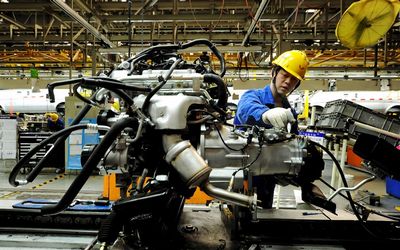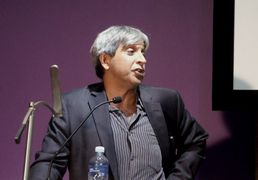China faces tough balancing act
by Martin Wolf,
2016-03-24 05:45:17.0
WHAT is going to happen to the Chinese economy in the coming five years?
This is an important question for those interested in the world’s prospects. Participating in this year’s China Development Forum offered a fascinating window into how the country’s policy makers view the challenges ahead. Insight came from speeches and papers prepared by scholars at the Development Research Centre of the State Council.
The country confronts four principal challenges. The first is how to transform its pattern growth, quantitatively and qualitatively. The second is how to manage the inevitable slowdown in underlying growth. The third is how to manage China’s interface with the global economy. The last is how to manage its domestic political evolution.
In the first place, China has accepted a slowdown in the trend rate of growth. In the period covered by the 13th five-year plan (2016-2020), this is forecast to be no lower than 6.5% a year. While that would be fast by global standards, it would be slow by China’s, at least until recent years.
This would, however, still deliver a doubling of real gross domestic product (GDP) per head between 2010 and 2020. That would be in keeping with former president Hu Jintao’s stated goal of achieving a "moderately prosperous society" by that date. At that point, real GDP per head, at purchasing power parity, should be close to a third of US levels.
A large slowdown in the headline rate of growth does not entail a large reduction in the growth of the welfare of the Chinese people. The headlong growth of the recent past has been associated with low-return investment, excess capacity, pollution, rising inequality and underinvestment in social consumption, notably on the environment, health and education.
It should even be possible for China to achieve high growth in living standards with slower GDP growth. Indeed, it might be better to abandon the GDP growth objective altogether in favour of one for growth of consumption, both public and private.
At the forum, Zhang Gaoli, the vice-premier, emphasised plans to change the quality of growth. He stressed the need for a more innovative economy and the urgency of controlling pollution.
The shift to a low-carbon economy offers a huge opportunity for economic progress. Beyond this, the five-year plan promises reform of the urban registration system ("hukou") to encourage permanent migration from the countryside. The economic and social benefits should be large.
This brings us to a closely related second challenge. These benign long-run changes cannot conceal the immediate gloom. It is precisely when an economy slows that its disequilibria are thrown into sharpest relief.
China invests close to 45% of GDP. This extraordinarily high level is hard to justify as growth slows. Furthermore, this high investment level is associated with explosively rising debt and falling growth in total factor productivity, a measure of technical progress. Such a path is unsustainable.
As the economy slows and growth shifts from manufacturing and construction towards services, the private sector’s need to invest must shrink.
But investment also generates almost half of all demand. Sustaining aggregate demand as investment growth weakens will be challenging.
The temptation for policy makers is already to restart the credit-fuelled investment engine. That, however, would postpone necessary adjustment, and so almost certainly create a bigger adjustment shock down the road.
This brings us to the third challenge: managing the country’s interface with the world economy. The economic slowdown of a high-saving China creates a double challenge. One is the effect on global demand, especially for commodities. Another is the tendency for an outflow of surplus funds to weaken the exchange rate, and so increase exports and the current account surplus.
Beijing seems prepared to let foreign currency reserves run down, rather than tighten outflow controls sharply or let the exchange rate fall. How these pressures are resolved will have global significance.
Fortunately, the authorities have developed imaginative ideas for using the surplus savings to promote development abroad. They include the "one belt, one road" programme for enhanced investment in overseas transport infrastructure and the creation of the Asian Infrastructure Investment Bank.
Finally, the envisaged transformation of China into a prosperous, market-oriented economy creates a big political test. Only a fool would consider political instability anything but a disaster for China and the world. Equally, the desire of President Xi Jinping to attack corruption, and so strengthen the legitimacy of the Communist Party is understandable.
It is hard, though, to believe that an innovative and outward-looking China can be contained indefinitely within the straitjacket of an all-powerful party-state.
Its political institutions must surely move beyond the "democratic centralism" invented by Vladimir Lenin a century ago.
The challenges are daunting. It is only the successes of the recent past that provide confidence in those of the future.
Financial Times

HARD AT WORK: An employee works on an assembly line producing vehicles at a factory in Qingdao, China. Picture: REUTERS
WHAT is going to happen to the Chinese economy in the coming five years?
This is an important question for those interested in the world’s prospects. Participating in this year’s China Development Forum offered a fascinating window into how the country’s policy makers view the challenges ahead. Insight came from speeches and papers prepared by scholars at the Development Research Centre of the State Council.
The country confronts four principal challenges. The first is how to transform its pattern growth, quantitatively and qualitatively. The second is how to manage the inevitable slowdown in underlying growth. The third is how to manage China’s interface with the global economy. The last is how to manage its domestic political evolution.
In the first place, China has accepted a slowdown in the trend rate of growth. In the period covered by the 13th five-year plan (2016-2020), this is forecast to be no lower than 6.5% a year. While that would be fast by global standards, it would be slow by China’s, at least until recent years.
This would, however, still deliver a doubling of real gross domestic product (GDP) per head between 2010 and 2020. That would be in keeping with former president Hu Jintao’s stated goal of achieving a "moderately prosperous society" by that date. At that point, real GDP per head, at purchasing power parity, should be close to a third of US levels.
A large slowdown in the headline rate of growth does not entail a large reduction in the growth of the welfare of the Chinese people. The headlong growth of the recent past has been associated with low-return investment, excess capacity, pollution, rising inequality and underinvestment in social consumption, notably on the environment, health and education.
It should even be possible for China to achieve high growth in living standards with slower GDP growth. Indeed, it might be better to abandon the GDP growth objective altogether in favour of one for growth of consumption, both public and private.
At the forum, Zhang Gaoli, the vice-premier, emphasised plans to change the quality of growth. He stressed the need for a more innovative economy and the urgency of controlling pollution.
The shift to a low-carbon economy offers a huge opportunity for economic progress. Beyond this, the five-year plan promises reform of the urban registration system ("hukou") to encourage permanent migration from the countryside. The economic and social benefits should be large.
This brings us to a closely related second challenge. These benign long-run changes cannot conceal the immediate gloom. It is precisely when an economy slows that its disequilibria are thrown into sharpest relief.
China invests close to 45% of GDP. This extraordinarily high level is hard to justify as growth slows. Furthermore, this high investment level is associated with explosively rising debt and falling growth in total factor productivity, a measure of technical progress. Such a path is unsustainable.
As the economy slows and growth shifts from manufacturing and construction towards services, the private sector’s need to invest must shrink.
But investment also generates almost half of all demand. Sustaining aggregate demand as investment growth weakens will be challenging.
The temptation for policy makers is already to restart the credit-fuelled investment engine. That, however, would postpone necessary adjustment, and so almost certainly create a bigger adjustment shock down the road.
This brings us to the third challenge: managing the country’s interface with the world economy. The economic slowdown of a high-saving China creates a double challenge. One is the effect on global demand, especially for commodities. Another is the tendency for an outflow of surplus funds to weaken the exchange rate, and so increase exports and the current account surplus.
Beijing seems prepared to let foreign currency reserves run down, rather than tighten outflow controls sharply or let the exchange rate fall. How these pressures are resolved will have global significance.
Fortunately, the authorities have developed imaginative ideas for using the surplus savings to promote development abroad. They include the "one belt, one road" programme for enhanced investment in overseas transport infrastructure and the creation of the Asian Infrastructure Investment Bank.
Finally, the envisaged transformation of China into a prosperous, market-oriented economy creates a big political test. Only a fool would consider political instability anything but a disaster for China and the world. Equally, the desire of President Xi Jinping to attack corruption, and so strengthen the legitimacy of the Communist Party is understandable.
It is hard, though, to believe that an innovative and outward-looking China can be contained indefinitely within the straitjacket of an all-powerful party-state.
Its political institutions must surely move beyond the "democratic centralism" invented by Vladimir Lenin a century ago.
The challenges are daunting. It is only the successes of the recent past that provide confidence in those of the future.
Financial Times























Change: -0.47%
Change: -0.57%
Change: -1.76%
Change: -0.34%
Change: 0.02%
Data supplied by Profile Data
Change: -1.49%
Change: 0.08%
Change: -0.47%
Change: 0.00%
Change: -0.04%
Data supplied by Profile Data
Change: -0.34%
Change: 0.03%
Change: -0.10%
Change: -0.22%
Change: -0.69%
Data supplied by Profile Data
Change: -0.28%
Change: -1.15%
Change: -0.07%
Change: -1.21%
Change: -0.22%
Data supplied by Profile Data